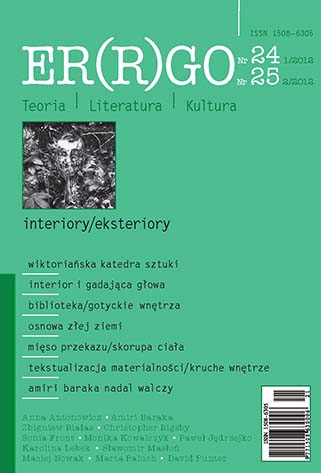Niematerialne przedmioty w ukrytych wnętrzach: Sir Thomasa Browne’a "Musaeum Clausum" a wczesnonowożytna konwencja muzealnego katalogowania
Immaterial Objects in Hidden Interiors: Sir Thomasa Browne’s "Musaeum Clausum" and the Early Modern Cataloguing Convention
Author(s): Karolina LebekSubject(s): Literary Texts
Published by: Wydawnictwo Uniwersytetu Śląskiego
Summary/Abstract: The article reads the short, jocular text by Sir Thomas Browne "Musaeum Clausum" or "Bibliotheca Abscondita" (1684) in the context of its dialogue with the cataloguing convention in the seventeenth-century culture of curiosity. The first part of “Immaterial Objects” discusses the cultural significance of museum catalogues in their double function: firstly, to represent the collected objects by endowing them with “a story” and fashioning them as curiosities and, secondly, to represent the social network build around the collection. Two printed catalogues serve as examples here: Robert Hubert’s catalogue of his own private collection printed in 1664 and the catalogue of the Repository of the Royal Society, "Musaeum Regalis Societatis", written by Nehemiah Grew and published in 1681. The second part of the article shows how Browne in "Musaeum Clausum" worked from within this convention of cataloguing undermining, and thus exposing, its principles in order to reflect (auto)ironically on the culture of collecting to which he belonged. Such a reading of Browne’s text also helps to reveal the changes in textual attention given to curious objects in seventeenth-century England.
Journal: ER(R)GO. Teoria-Literatura-Kultura
- Issue Year: 2012
- Issue No: 24-25
- Page Range: 10-23
- Page Count: 14

